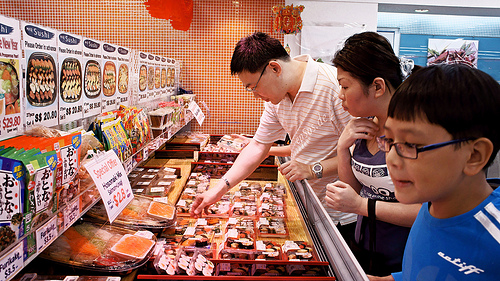 The Nielsen Global Survey of Inflation Impact revealed that Filipinos plan to cope with rising food prices by growing some of their own food, shopping at cheaper stores such as discount shops, fresh food farmer’s markets, warehouse club stores, hypermarkets, and local neighbourhood stores.
The Nielsen Global Survey of Inflation Impact revealed that Filipinos plan to cope with rising food prices by growing some of their own food, shopping at cheaper stores such as discount shops, fresh food farmer’s markets, warehouse club stores, hypermarkets, and local neighbourhood stores.
The study was conducted to obtain insights into how consumers around the world of all social brackets adjust to inflationary trends.
Nielsen surveyed 29,000 Internet respondents in 58 countries, including about 500 in the Philippines.
“Rising food prices impact nearly all consumers,” Nielsen Philippines Managing Director Stuart Jamieson said. “Instead of using income to gauge spending habits, FMCG [fast-moving consumer goods] companies should look at consumer diversity, spending flexibility and the consumer demand landscape to have a better understanding of buying potential and to accurately assess goods and services that can meet consumers’ needs.”
The survey further revealed that Filipino respondents are also considering the possibility of altering their spending patterns in the consumption of select products. Such changes include slowing down on eating out, buying new clothes and accessories, snacking, recreation and entertainment and travelling.
In the 2009 Family Income and Expenditure Survey, food expenses account for 42.6 percent of total household expenditures nationwide.
Food expenses represented a substantial part in the spending of bottom 30-percent households, at 59.9 percent. Conversely, among the upper 70 percent of households, food expenses account for 40.5 percent of household spending.
“When asked about likely spending changes to specific food categories, 20 percent of Filipino respondents indicated they would buy more fish and seafood, while 16 percent said they would stock up on fresh or frozen fruits and vegetables, and 15 percent said they would buy more organic products,” Nielsen said in a statement.
“More than half of Philippine respondents had no plans to change their spending on staple categories like meat and poultry [66 percent], bread and bakery goods [64 percent], and dairy [56 percent]. Seven out of 10 of Filipino respondents said they would buy fewer products such as chips and other snack foods [75 percent], carbonated beverages [73 percent] and candies, cookies and other sweets [71 percent],” it added.
Meanwhile, Filipino respondents indicated they are not likely to scrimp on their spending for home meals, education and medical expenses even if prices go up.
Additionally, they are not likely to scrimp on doctor and dentist visits, medicines and vitamins, savings and investments, and housing, which includes rent, mortgage and utilities.
